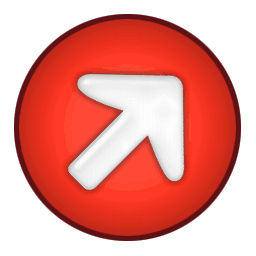Yes, optimizing software can be accessed from many devices and platforms. Most modern optimisation software is web-based or cloud-based, which means it can be used from any internet-enabled device, such as a computer, tablet, or smartphone. This lets users to access the software and their data from anywhere, making it both convenient and versatile. Before acquiring any software, be sure that it is compatible with all of the devices and platforms you intend to use.
List of 20 Best Optimisation Software
IObit is a Windows PC optimization tool you need. With its intuitive interface, IObit offers a comprehensive solution for cleaning, optimizing, and protecting your system. Safeguard your personal data and enhance your computers performance with a sin...Read More IObit
Prix is a Optmisation software designed specifically for Hotels and Hostels to boost their revenue. Our software is user-friendly and comes with transparent monthly fees, eliminating any hidden charges. With Prix, accessing and setting up your data i...Read More Prix
Beyond is a revenue management tool for owners and managers of short-term rentals. Our innovative features, including dynamic pricing, OTA synchronization, and a direct booking platform, will help you boost your revenue. Gain valuable insights to opt...Read More Beyond
WinUtilities solution for optimizing your Windows PC. This feature-packed suite offers a wide range of tools to elevate performance, fortify security, and personalize your device. From system optimization to customizable screens, WinUtilities has got...Read More WinUtilities
anyLogistix is a robust supply chain analytics solution that combines advanced optimization techniques and simulation technologies. With our software, businesses can easily design, optimize, and analyze their supply chains, leading to better supply c...Read More anyLogistix
SlimCleaner Plus solution for optimizing your devices performance and battery life. With real-time performance optimization, say goodbye to slow speed and compromised security. Regain control over your device and keep it running smoothly and efficien...Read More SlimCleaner Plus
Clear Demand is a retail software solution designed to enhance pricing strategies and boost competitive edge. Powered by advanced technology and data analytics, our platform enables retailers to efficiently manage pricing across their entire business...Read More Clear Demand
Speedup New PC Optimizer is a software designed to enhance the speed and performance of your computer. Forget about searching for the perfect solution, as our powerful program offers a variety of optimization options to give your PC a much-needed boo...Read More Speedup New PC Optimizer
EZTax Self Service IT Filing is a tax filing platform in India that is user-friendly and comprehensive. In just 7 minutes, you can easily file your taxes, plan your finances, and save money with our convenient App and Web options. As a bonus, our pla...Read More EZTax Self Service IT Filing
Planilog - an innovative and efficient advanced planning and scheduling solution for streamlining your production and maintenance operations. Equipped with state-of-the-art constraint-based technology, Planilog dynamically adjusts schedules in real t...Read More Planilog
Defencebyte Computer Optimizer solution for a faster and more efficient computer performance. This powerful software targets and removes corrupted registry entries that can cause system slowdowns. With its advanced optimization techniques, Defencebyt...Read More Defencebyte Computer Optimizer
MG Fleet is aroute planning and optimization software tailored for businesses seeking to efficiently manage their diverse service schedules. Our proven solution eliminates the need for manual planning and simplifies fleet management processes by leve...Read More MG Fleet
Tweakeze solution to effectively monitor and track all changes made to your Windows File System and Registry database. With its real-time monitoring feature, the software promptly executes predetermined or customized actions to ensure optimal perform...Read More Tweakeze
dunnhumby solution for modern merchandising. Utilize our proven optimization and modeling tools to simulate and optimize pricing and promotional scenarios before implementing them. Our advanced features cover a variety of crucial areas such as price,...Read More Dunnhumby
System Ninja is a system optimization tool for Windows. Its primary function is to eliminate unnecessary files, enhance system performance, and resolve any issues that may be slowing down your computer. With its advanced capabilities, System Ninja ef...Read More System Ninja
PC Manager is a registry cleaner and PC optimizer. With its user-friendly interface and powerful tools, PC Manager efficiently cleans and repairs the Windows registry to boost overall computer performance. Say goodbye to sluggish speeds and hello to...Read More PC Manager
Experience a faster and smoother computing experience with CCleaner, the trusted and widely-used PC optimization software. With just one click, CCleaner helps you efficiently clean up your device for improved system performance. Its advanced features...Read More CCleaner
Revionics is a profit optimization software designed for retailers to leverage data-driven analytics and demand-based insights for creating effective merchandising strategies with a focus on customer needs. Our platform enables retailers to gain a co...Read More Revionics
RouteSmart, the unparalleled optimization software that streamlines management processes. Developed with compatibility for ESRIs ArcGIS and the ability to seamlessly integrate with existing GIS data, our solutions are the perfect fit for your busines...Read More Integrated Skills
FleetRoute - a premier route optimization software from CIVIX. This powerful solution addresses the unique challenges across industries, including municipalities, private corporations, and public utilities. Its cutting-edge capabilities allow for eff...Read More FleetRoute
Learn More About Optimisation Software
- What Is Optimisation Software?
- What Are The Recent Trends In Optimisation Software?
- Benefits Of Using Optimisation Software
- Important Factors To Consider While Purchasing Optimisation Software?
- What Are The Key Features To Look For In Optimisation Software?
- Why Do Businesses Need Optimisation Software?
- How Much Time Is Required To Implement Optimisation Software?
- What Is The Level Of Customization Available In Optimisation Software?
- Which Industries Can Benefit The Most From Optimisation Software?
- Conclusion
What Is Optimisation Software?
Optimisation software is a strong tool that helps organizations optimize their operations and increase productivity. It is a sort of software that aims to improve several elements of a business, including supply chain management, resource allocation, and data analysis. Traditionally, these activities were carried out manually, which not only took a large amount of time and effort, but also allowed for errors.
However, as technology advances, firms may now automate these procedures using optimization software, saving time and costs while improving accuracy. One of the primary characteristics of optimization software is its capacity to use data to make informed judgments. Businesses can uncover patterns and trends by analyzing massive amounts of data, which can then be utilized to anticipate and forecast future events. This data-driven strategy enables firms to make more informed decisions and optimize their operations accordingly. Another benefit of optimization software is its adaptability and scalability.
It may be customized to meet the individual demands of a company, making it appropriate for enterprises of various sizes and industries. Furthermore, it can adapt to changing business needs and manage complex circumstances, making it an invaluable asset for companies seeking to remain competitive in a quickly changing market. Furthermore, optimisation software gives real-time data, allowing firms to monitor their operations and make changes as necessary. This not only helps them stay on top of their performance, but also allows them to handle any potential difficulties as soon as possible.
What Are The Recent Trends In Optimisation Software?
In recent years, optimisation software has emerged as a crucial tool for businesses and organisations seeking to enhance their operations and maximise efficiency. As technology advances, trends in optimisation software evolve.
Here are some of the latest trends that customers should examine while choosing an optimisation software:
1. Cloud-Based Solutions: As cloud computing becomes more popular and reliable, many optimisation software companies are offering their solutions as cloud-based services. This enables easier and more flexible access to the software from any device or location, making it a more convenient choice for organizations.
2. Artificial Intelligence (AI) And Machine Learning: These new technologies are being integrated into optimization software to improve its capabilities. AI and machine learning can evaluate enormous amounts of data, detect trends, and give optimization recommendations, thereby improving software efficiency and accuracy.
3. Integration With Other Systems: To enhance the usefulness of optimization software, several suppliers offer connections with other company systems such as Enterprise Resource Planning (ERP) and Customer Relationship Management (CRM) applications. This enables seamless data sharing and cooperation across multiple departments within a business.
4. Real-Time Optimization: While traditional optimization software operated on a batch processing methodology, recent trends have evolved toward real-time optimization. This allows organizations to continuously monitor and alter their operations in reaction to changes in demand and supply, increasing the process's agility and effectiveness.
5. User-Friendly Interfaces: User experience (UX) is an important factor in the adoption of any software, including optimization software. In recent years, providers have focused on creating more user-friendly interfaces that are simple to browse, visually appealing, and deliver complete data and insights.
6. Mobile Accessibility: As mobile devices become more popular, many optimisation software companies are building mobile applications to allow users with access to the software while on the go. This enables instant access to critical data and insights, making decision-making more efficient.
7. Industry-Specific Solutions: Optimisation software is increasingly being adapted to satisfy the unique requirements of various industries. Businesses, whether in manufacturing, retail, or logistics, can find software tailored to their specific needs and issues.
Benefits Of Using Optimisation Software
Optimisation software is a useful tool for increasing efficiency and effectiveness in a variety of industries and enterprises. It improves processes and operations by analyzing data, recognizing patterns, and proposing solutions to optimize resource allocation, lower costs, and boost production.
Here are some specific advantages to employing optimisation software that make it a must-have for any business.
1. Increase In Productivity: Optimisation software assists firms in optimizing their processes and operations, resulting in higher productivity. It considers all variables and limitations, including any changes, and recommends the optimal option to enhance overall efficiency.
2. Cost Savings: By reducing inefficiencies and discovering cost-cutting opportunities, optimization software can dramatically lower operating costs. It aids in resource allocation, reduces waste, and increases output, leading in higher profit margins.
3. Improved Decision Making: Optimisation software enables decision-makers to make informed, data-driven decisions. The software examines massive amounts of data to detect patterns and trends, delivering useful insights to help drive strategic decision-making.
4. Real-Time Monitoring: Optimisation software provides real-time process monitoring, allowing issues to be identified and resolved as they arise. This enables for quick decisions and modifications to attain the best results.
5. Scalability And Flexibility: Optimisation software is extremely scalable and adaptable, making it suited for enterprises of all sizes and industries. It adapts to changing company needs and can be tailored to individual requirements.
6. Improved Consumer Satisfaction: By improving processes, firms may better match consumer requests, resulting in higher customer satisfaction. This can help you keep clients, recruit new ones, and eventually increase revenue.
7. Competitive Advantage: In today's highly competitive industry, gaining an advantage over competitors is critical. Optimisation software aids in optimizing processes and operations, opening the way for increased performance and a competitive advantage.
Important Factors To Consider While Purchasing Optimisation Software?
When it comes to selecting optimization software, consumers need examine a number of crucial elements before making a purchase. As the market for this type of software expands, it can be difficult to sort through the available options and choose which one will best fit your requirements.
We will look at the most important variables to consider while selecting optimisation software.
1. The Purpose Of The Software: The first and most important element to consider is the objective of the software. What specific problems or tasks do you intend to tackle or automate? Are you seeking for software to help with supply chain management, sales forecasting, and production planning? Knowing the software's precise function will allow you to limit down your alternatives and select the one that will add the most value to your business.
2. Scalability & Flexibility: As your company grows, your requirement for optimisation software may also increase. As a result, it is critical to assess the scalability and adaptability of any program you are contemplating. Can it handle increasing amounts of data and operations? Is it adaptable to your evolving business needs? Understanding the software's scalability and adaptability is critical for long-term success and avoiding the need to upgrade to a new system later.
3. Integration Capabilities: Another key element to examine is how well the program integrates with your existing systems and tools. Will it work seamlessly with your CRM, ERP, or BI software? The absence of integration might result in data silos and reduce the software's efficacy. For maximum performance, consider software that integrates readily with your existing systems.
4. User-Friendliness: Choosing a user-friendly optimization program that your staff can simply learn and manage is critical. The software's interface should be intuitive and easy, with clearly labeled and accessible features and functionalities. Choose software that provides training and assistance to help your team get up to speed fast and fully utilize the platform's capabilities.
5. Customer Support And Service: When investing in optimization software, it is critical to examine the software vendor's customer support and service. Will they be available to assist with any concerns that may arise? Is there any ongoing assistance and training available? Choose a software vendor that provides great customer assistance to ensure a seamless setup and long-term success.
6. Security And Data Protection: Data is a significant asset for any business, and it must be protected against cyber threats. When selecting optimisation software, make sure to ask about the security precautions and data protection procedures in place. The program should include strong security measures, regular backups, and compliance with data privacy laws.
7. Cost And Return On Investment (ROI): Last but not least, assess the software's cost and ROI. While it may be tempting to go with the cheapest choice, consider the software's long-term worth and potential return on investment. To evaluate the true cost of the program, consider its features and capabilities, as well as how they correspond with your business needs.
By taking these crucial criteria into account, customers may make an informed selection when selecting optimization software for their organization. For maximum efficiency and growth, conduct extensive study and comparison of several possibilities before selecting software that corresponds with your specific objectives and goals.
What Are The Key Features To Look For In Optimisation Software?
When it comes to selecting the proper optimisation software for your organization, there are a few crucial things to consider. These elements can ultimately determine the software's performance and impact on your business operations. As a buyer, you must conduct extensive research and evaluation of each aspect to guarantee you are making the greatest decision for your organization.
Here are the main qualities you should look for in optimization software.
1. Customization And Flexibility: Because each organization has distinct demands and operations, it is critical to select software that can be modified to meet those specific requirements. Look for optimisation software that allows for modification and flexibility, whether in terms of user interface, functionality, or system interaction.
2. Real-Time Data Analysis: Being able to evaluate and act on data in real time is an important aspect of optimization. Look for software that can collect, process, and present data in real time, allowing you to make timely and educated decisions based on correct information.
3. Machine Learning And AI Capabilities: A powerful optimization software should use sophisticated technologies such as machine learning and artificial intelligence to continuously improve and adapt to your business processes. These traits can assist spot patterns and make predictions, allowing for more efficient and effective decision-making.
4. Scalability: As your business expands, so should your software. Look for optimisation software that can scale to meet your company's needs, whether that means adding more divisions, procedures, or locations.
5. Collaborative Tools: Effective optimization requires collaboration across teams. Look for software that has capabilities like work assignment, communication tools, and document sharing to help you collaborate and expedite procedures.
6. User-Friendly Interface: The software should have an intuitive interface that allows all team members to navigate and use the capabilities without requiring extensive training. A user-friendly design can boost adoption and success in the organization.
7. Integration With Existing Systems: The optimisation software should work easily with your existing systems, such as ERP, CRM, or inventory management software. This connection has the potential to improve data accuracy while reducing job duplication.
8. Mobile Accessibility: In today's fast-paced corporate world, having data access and the capacity to make decisions while on the go is critical. Look for software that provides mobile access, so you can stay connected and informed from anywhere.
9. Customer Support: Optimisation software, like any software, can experience problems, and having dependable customer assistance can make all the difference in getting your operations back up and running quickly. Make careful to select a software provider that provides a variety of support alternatives and has a track record of reacting quickly to customer concerns.
Why Do Businesses Need Optimisation Software?
In today's fast-paced corporate world, staying ahead of the competition is critical for success. This entails constantly refining and optimizing operations in order to boost efficiency and optimize profitability. However, manual optimization is time-consuming and prone to human mistake. This is when optimization software comes in. Optimization software helps firms improve their operations by automating and optimizing processes, resulting in higher productivity and cost savings.
This software uses powerful algorithms and data-driven analytics to uncover patterns, trends, and opportunities for development. One of the primary reasons firms want optimization software is to increase operational efficiency. Employees can focus on more important activities when laborious and repetitive jobs are automated, resulting in increased productivity.
Furthermore, with the capacity to model and test various scenarios, this software can assist firms in making data-driven decisions for better results. In addition to increasing productivity, optimization software can result in cost savings for enterprises. This software can save money by finding inefficiencies and streamlining operations. It can also aid in inventory management, eliminating surplus inventory and preventing stockouts, saving firms money in the long term.
Furthermore, optimization software provides real-time insights and data, offering firms a complete picture of their operations. This enables them to detect bottlenecks and take proactive steps to improve performance. Businesses that effectively track and measure important performance indicators may accurately evaluate their development and make educated decisions to ensure long-term success.
Overall, optimization software is a crucial tool for organizations who want to remain competitive in their sector. This software is an excellent investment for any organization because it automates procedures, increases efficiency, and lowers expenses. Using innovative technology and data analytics, optimization software lays the road for success and growth in today's dynamic company scene.
How Much Time Is Required To Implement Optimisation Software?
The time required to adopt optimisation software varies based on a number of factors, including the software's complexity, the size of your firm, and the level of customization necessary. However, it can take anywhere from a few weeks to a few months to integrate seamlessly with your existing systems and processes. During the early phases, it is critical that your team be trained and comfortable with the program in order to fully realize its potential.
This can take anywhere from a few days to several weeks, depending on your team's learning curve. Furthermore, depending on the extent of customisation required, it may take some time to configure the software for your specific business needs. It is critical to remember that any potential barriers or challenges that develop during the process may also have an impact on the implementation timeline.
In such circumstances, it is recommended that you engage directly with the software vendor to resolve these concerns as soon as possible. Furthermore, using cloud-based optimisation tools can considerably minimize the installation time. A cloud-based solution allows the program to be up and operating in a matter of days, and the software provider handles upgrades and maintenance, saving you time and resources.
What Is The Level Of Customization Available In Optimisation Software?
Optimisation software is a significant instrument in the world of business and analytics, assisting organisations in making data-driven decisions that lead to enhanced efficiency and profitability. One of the most important elements to consider when selecting optimization software is the level of customisation it provides. Customization is essential for ensuring that software meets a company's specific demands and specifications.
In the realm of optimization software, customization refers to the capacity to modify the software to specific company requirements and processes. This might include basic cosmetic changes like branding and user interfaces, as well as more substantial customizations like the incorporation of specialized algorithms or functionality. The level of customization accessible in optimization software has a significant impact on its performance and usefulness for businesses.
So, what level of customisation is available in optimization software? It varies from software to software and is determined by a number of criteria, including provider, pricing, and features. Most optimization software provides a high level of customisation, allowing firms to tailor the software to their own requirements. At the most basic level, every optimisation software allows you to input and change data, generate reports, and create custom dashboards.
However, some advanced software solutions go a step further by providing more complex customization choices. These can include building custom workflows, establishing specialized rules and parameters to handle various business scenarios, and adding industry-specific algorithms. The level of customization is frequently associated with the type and complexity of the software.
For example, simpler optimization tools, such as those used for work scheduling or inventory management, may have fewer customisation options. On the other hand, sophisticated software developed for complicated data analysis and forecasting typically includes considerable customization possibilities to meet the unique needs of various industries and enterprises.
Before selecting an optimisation software, you should examine the level of customisation available and how well it fits your business needs. Some vendors may additionally provide further customization services for an additional fee, allowing organizations to further personalize the software to their specific needs. Furthermore, before purchasing the program, try its customization features to guarantee that it can properly support your business procedures.
Which Industries Can Benefit The Most From Optimisation Software?
Optimisation software is an extremely strong instrument that can aid a wide range of industries. This software, which uses advanced algorithms and data analysis, can assist firms in streamlining their processes, lowering costs, and increasing efficiency.
In this buyer's guide, we'll look at which sectors can gain the most from optimisation software and how it can improve their operations.
1. Logistics And Supply Chain Management: The logistics and supply chain business manages the complicated flow of goods and materials from suppliers to customers. Optimisation software can help you locate the most efficient routes, reduce delivery times, and optimize inventory levels. This results in cost savings, more customer happiness, and enhanced production.
2. Manufacturing: Using optimisation software, manufacturers can detect bottlenecks in their manufacturing processes, optimize production schedules, reduce downtime, and enhance resource efficiency. This equates to higher efficiency, less waste, and more output.
3. Transportation: Whether it's a passenger or cargo transportation company, optimisation software may help with route planning, vehicle and driver scheduling, and maintenance planning. This leads to on-time delivery, lower fuel costs, and more effective fleet resource management.
4. Retail: Optimisation software may transform retail organizations by optimizing shop layouts, forecasting demand, and managing inventory levels. Retailers can increase customer satisfaction while lowering operating expenses by reducing stockouts and overstocking.
5. Energy And Utilities: Optimisation software may help energy and utility firms manage power grids, estimate demand and supply, and optimize resource use, resulting in significant cost savings, enhanced efficiency, and improved reliability.
6. Healthcare: With an increasing demand for efficient and cost-effective healthcare services, optimization software might be a useful tool for providers. It can help with resource allocation, patient scheduling, and healthcare facility management, leading in better patient care and lower operational expenses.
7. Construction: In the construction sector, maximizing project deadlines, resources, and budgets is vital to success. Optimisation software can help you spot possible problems, manage resources effectively, and complete projects on schedule and under budget.
8. Financial Services: Optimisation software can help financial firms manage risk, reduce fraud, and optimize investment plans. It can also help with portfolio optimization, resulting in higher returns and lower risk.
Conclusion
To summarize, optimization software is a strong tool that may help firms of all sizes enhance their efficiency, production, and overall performance. By automating tasks, identifying areas for improvement, and giving important insights and predictions, optimisation software can result in considerable cost savings and revenue increase. When choosing optimization software, you should examine your individual business requirements, budget, and compatibility with existing systems.
Before making a selection, conduct thorough study and comparisons of several options. Look for software with user-friendly interfaces, customisable capabilities, and great customer support to ensure smooth integration and long-term success. It is also helpful to choose software that provides regular upgrades and changes in order to stay current with industry trends and changing business needs.
Businesses that invest in the proper optimisation software can streamline their processes, make data-driven decisions, and reach their objectives faster and more efficiently. We hope this buyer's guide has provided you with useful insights and advice to help you make an informed decision and begin your journey to optimization success.
Optimisation Software FAQ's
Can Optimisation Software Be Accessed Across Multiple Devices And Platforms?
Is Optimisation Software Future-Proof And Adaptable To Emerging Technologies Like AI, Blockchain Or IoT?
Yes, optimization software has the potential to be future-proof and adaptable to upcoming technologies such as artificial intelligence, blockchain, and the Internet of Things. As firms continue to adopt modern technologies into their processes, optimization software can evolve to smoothly integrate them.
With its potential to automate and improve decision-making, optimization software is well positioned to keep up with the continually changing technological world. As new technologies emerge, optimisation software will inevitably evolve and adapt to suit the ever-increasing demands of company optimization.
Is There A Free Trial Offered To Assess Optimisation Software Before Committing?
Yes, many optimisation software vendors provide a free trial period so that users can try their product before making a purchase. Potential consumers can examine the software's features, user interface, and performance. During the trial time, users can determine whether the program satisfies their needs and is worth investing in. It is encouraged to use free trials to make an informed decision before purchasing the software.
Does Optimisation Software Offer Data Security Features And Meet Regulatory Compliance Standards?
Yes, optimization software often includes data security safeguards to secure sensitive data. This incorporates encryption, access controls, and scheduled backups. Furthermore, premier optimisation software follows strong regulatory compliance standards, including as GDPR and HIPAA, to ensure that data is processed and stored securely and compliantly. This provides users with piece of mind and ensures the integrity of their data.
Can Optimisation Software Integrate Seamlessly With Existing Tools And Platforms?
Yes, optimization software is intended to work smoothly with existing tools and platforms to increase efficiency and productivity. It may integrate with a variety of systems, including CRMs, ERPs, and data analytics platforms, to automate procedures and deliver useful insights.
This enables firms to streamline operations and make informed decisions. Furthermore, connectivity with major technologies like as Google Analytics and Adobe Analytics provides a comprehensive view of data, enabling improved optimisation techniques.






















